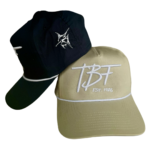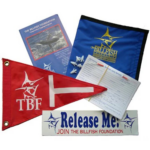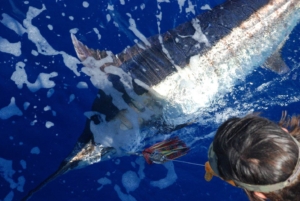
The Billfish Foundation maintains the largest private tag and release database in the world, with 260,000 records by 150,000 anglers. In 2020 alone, TBF anglers and captains tagged, released, or recaptured 7,000 billfish and tuna across the world. Of these 7,000 new records, 1,263 were of blue marlin. Like with sailfish, there is some debate on the difference between Atlantic and Indo-Pacific blue marlin. Makaira nigricans refers to Atlantic blue marlin, while Makaira mazara are Indo-Pacific. Blue marlin can measure up to 2,000lbs and 12ft long. Like other species of billfish, the Indo-Pacific blue marlin tend to be larger than their Atlantic counterparts. More information on how to identify a blue marlin can be found on our youtube channel.
Thank you to everyone that tagged and released blue marlin last year. Click here for information on our Tag and Release Program and here to purchase tagging equipment and other TBF items. To support the TBF tagging program, become a member here.
Tags
Captains and anglers across the globe tagged 716 blue marlin in 2020. Because blue marlin are some of the largest billfish, the average size of tagged blue marlin was larger than most other species. On average, tagged blue marlin weighed 266.3lbs (120.8kg) and measured 88.5in (225cm). However, they were as small as only 20lbs (9kg) and as large as 838lbs (380.1kg)!
Blue marlin have the most geographically comprehensive tagging effort amongst all billfish. As a result, blue marlin were tagged in a remarkable 21 countries in 2020 alone! These include: Japan, Dominican Republic, USA, Aruba, Honduras, Cape Verde, Mexico, Sri Lanka, Australia, Cook Islands, Bahamas, Costa Rica, Angola, Puerto Rico, Brazil, Azores, Seychelles, South Africa, Solomon Islands, USVI, and St Lucia. Unsurprisingly, with many countries come many Captains and anglers. More specifically, 250 anglers and 124 Captains! The most prolific anglers were Kumie Saegusa, Chad Beaudry, Guy Arrington, and Jill and Scott Yates. The most prolific Captains were Ben Horning, Jim Brasher, Mark Pagano, Scooter Porto, Shane O’Brien, and Tracy Epstein.
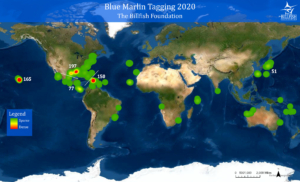
Of the 21 countries with blue marlin tags, the majority were in North America. More specifically, tagging is highest in the Caribbean Sea and Gulf of Mexico. Within the Gulf, the coasts of Louisiana, Mississippi, and Alabama distinguish themselves. Within the Caribbean islands, the Dominican Republic is prominent. Other hot spots include Hawaii and Japan.

Blue marlin tagging exhibited a fairly smooth bell curve. Lowest in the early months of the year, it slowly trended up until it peaked in July and August. Afterwards, it fell sharply through the end of the year. Given most blue marlin tagging occurred in North America, a late summer peak during warm weather is quite normal.
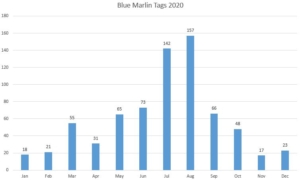
Releases
Blue marlin releases occurred all across the world. In total, 540 blue marlin were released in 18 different countries. These countries include: USA, Mexico, Dominican Republic, Cape Verde, Australia, Costa Rica, Guatemala, Bahamas, Curacao, Angola, Ecuador, Puerto Rico, Panama, Seychelles, USVI, St Lucia, Kenya, and Honduras. Like tagging, the majority of blue marlin releases were in the Atlantic. However, unlike blue marlin tagging, blue marlin releases were less evenly distributed throughout the Caribbean. Instead, blue marlin releases were highest in the islands, most notably Curacao, St Lucia, USVI, and the Dominican Republic.
Though blue marlin releases occurred in almost the same number of countries as that of tagging, the number of Captains and anglers involved was drastically lower. Compared to the 250 anglers and 124 Captains tagging, only 99 anglers and 47 Captains released blue marlin in 2020. Of these, the most prolific anglers were Kanmair Kleinmoedig, Jill Yates, and Mike Brauser. The most prolific Captains were Mark Pagano, Tim Popfinger, and Gordo Heldewier.
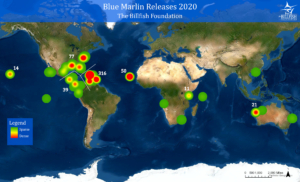
Blue marlin releases were quite irregular and did not exhibit the same temporal trend as tags. In fact, February saw the largest peak in blue marlin releases, followed by the late summer and early autumn. This trend is odd, given releases and tags occurred in roughly the same number of countries. However, the high release effort in the Caribbean islands could have made blue marlin releases favorable year round, as these areas exhibit more consistent temperatures.
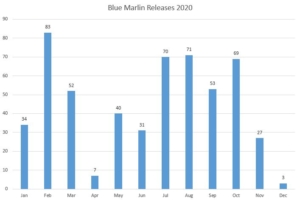
Recaptures
Seven blue marlin recaptures occurred in 2020. Unfortunately, of these seven, only three had original tag information. However, that’s about all these recaptures had in common! The first blue marlin recapture occurred in February of 2020 after just half a year at large. In that time, the fish traversed nearly 3,200 miles of ocean! In contrast, a blue marlin in Exmouth was both tagged and recaptured within four days and after less than ten miles of swimming. The third blue marlin recapture had the longest time at large, roughly ten months, but stayed in the Gulf of Mexico the entire time.
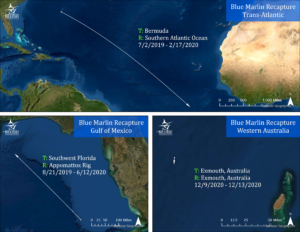
The other four blue marlin were recaptured in waters off of the Philippines, Papua New Guinea, Texas, and Guadeloupe, FWI. If you tag blue marlin, or any billfish, please remember to send in your tagging information. Tag cards within the US have pre-paid postage, meaning you can drop them straight in the mailbox without an envelope or stamp. If you’re outside of the US and do not want to mail, you can scan and send your completed cards to [email protected]. Finally, you can input your tag information yourself on our online Tag and Release Database, tagbillfish.org.
Thank you to all of the captains, mates, and anglers that tagged, released, and recaptured blue marlin in 2020. We are incredibly appreciative of everyone that helped us gather data on blue marlin in 2020, and we are excited to learn more in 2021! To stay up-to-date with all things billfish, become a member, subscribe to our newsletter, visit our online shop, and follow us on social media, @TheBillfishFoundation.
*Please note that this review contains only data that was recorded between January 1, 2020 and December 31, 2020 and received by TBF by February 30th, 2021.

